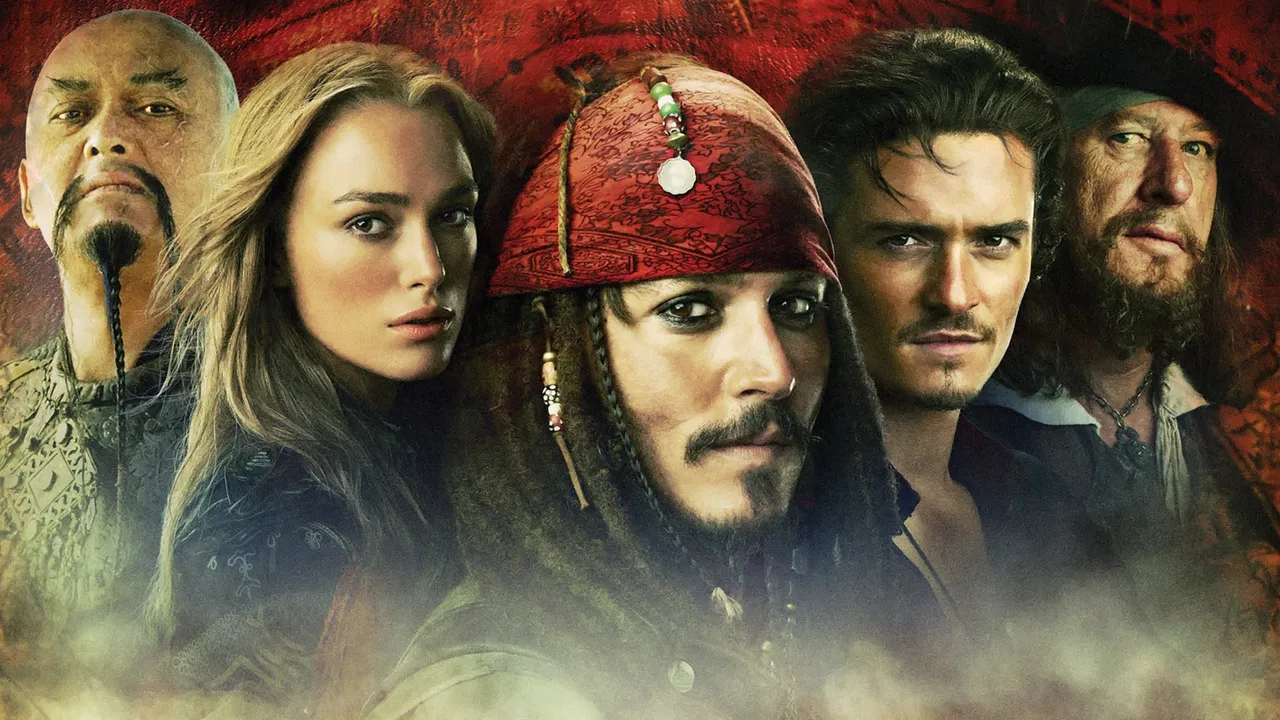
The third instalment often marks a pivotal moment, typically signalling when the film series begins to falter. This trend holds true even for the most successful film of its time, Pirates of the Caribbean: At World’s End, the 2007 period fantasy adventure directed by Gore Verbinski. At World’s End is not a straightforward sequel; rather, it is part of a two-part narrative shot back-to-back with its predecessor, Dead Man's Chest, and released with a one-year gap.
Set in the early 18th century, the plot unfolds a few months after the events of Dead Man's Chest. Lord Cutler Beckett (played by Tom Hollander), the ruthless chairman of the East India Trading Company, possesses Davy Jones' heart (played by Bill Nighy), thereby controlling both him and his formidable ship, the Flying Dutchman. Beckett exploits this power to wage war against piracy, leading nine Pirate Lords to convene at Shipwreck Cove in a desperate bid to counter his threat. Among these lords is Jack Sparrow (played by Johnny Depp), who finds himself trapped in Davy Jones' Locker alongside his ship, the Black Pearl. Meanwhile, his loyal crew—Will Turner (played by Orlando Bloom), Elizabeth Swann (played by Keira Knightley), and Hector Barbossa (played by Geoffrey Rush)—embark on a quest to rescue him, requiring a crucial map held by Sao Feng (played by Chow Yun-fat), a pirate captain based in Singapore.
At World’s End epitomises the quintessential Hollywood summer blockbuster: grandiose, sprawling, and largely successful in replicating the formula that worked for its predecessors. The film combines traditional action sequences with romance, humour, and an abundance of CGI, all packaged into an epic runtime exceeding two and a half hours. With a staggering budget of $300 million, it became the most expensive film made up to that point. Its financial success was almost assured—not only due to the massive box office draw of its predecessor but also because audiences felt compelled to return to theatres to witness the resolution of the cliffhanger left at the end of Dead Man's Chest. This formula has since been emulated by numerous big-budget franchises seeking similar commercial triumphs.
However, comparisons between At World’s End and its predecessor reveal that Verbinski faced challenges in crafting this third film. Most notably, he was tasked with providing a resolution that culminated in some semblance of a happy ending. While new characters were introduced—such as Sao Feng, portrayed with enthusiasm by Chow Yun-fat—his role ultimately fades too quickly from the narrative, leaving viewers wanting more depth from an otherwise intriguing character. Similarly, Keith Richards, iconic rock star who inspired Johnny Depp for the role of Jack Sparrow makes a brief appearance as Jack Sparrow's father; however, this cameo feels more like fan service than a meaningful addition to the story.
A notable shift in tone sets At World’s End apart from its predecessors. The film opens with an exceptionally dark scene depicting mass executions for alleged piracy, including children among those condemned. This grim portrayal can be interpreted as a commentary on contemporary issues such as George W. Bush's controversial policies and human rights violations during the Global War on Terror. Regardless of the filmmakers' intentions, this heavy-handed opening casts a long shadow over the rest of the film, stripping away much of the light-heartedness that characterised earlier entries despite their graphic violence.
The complexity of At World’s End’s plot further complicates its reception. The intricate web of pirate politics filled with double-crosses and betrayals might have thrived better in a television format like Black Sails, where such narratives can be explored more thoroughly without feeling rushed or convoluted. Many viewers may find themselves lost amid these twists and turns; some plot points come off as confusing or tedious rather than engaging.
Fortunately, there is a resurgence in excitement during the film's climactic final segment featuring an exhilarating battle between two pirate ships amidst a maelstrom. This action-packed sequence restores some momentum and leaves viewers with an improved impression; however, it does not fully redeem At World’s End, which ultimately stands as the most disappointing entry among the first three films in this beloved series.
The enormous commercial success of At World’s End inevitably paved the way for further sequels. However, both Knightley and Bloom opted not to reprise their roles for subsequent films, and Verbinski did not return as director. In 2011, Pirates of the Caribbean: On Stranger Tides, described as a "standalone sequel" partly inspired by Tim Powers' novel, was released without them. Eventually, in 2017 Knightley and Bloom returned for what could be considered a "proper" sequel titled Pirates of the Caribbean: Dead Men Tell No Tales.
RATING: 5/10 (++)
Blog in Croatian https://draxblog.com
Blog in English https://draxreview.wordpress.com/
InLeo blog @drax.leo
Hiveonboard: https://hiveonboard.com?ref=drax
Rising Star game: https://www.risingstargame.com?referrer=drax
1Inch: https://1inch.exchange/#/r/0x83823d8CCB74F828148258BB4457642124b1328e
BTC donations: 1EWxiMiP6iiG9rger3NuUSd6HByaxQWafG
ETH donations: 0xB305F144323b99e6f8b1d66f5D7DE78B498C32A7
BCH donations: qpvxw0jax79lhmvlgcldkzpqanf03r9cjv8y6gtmk9